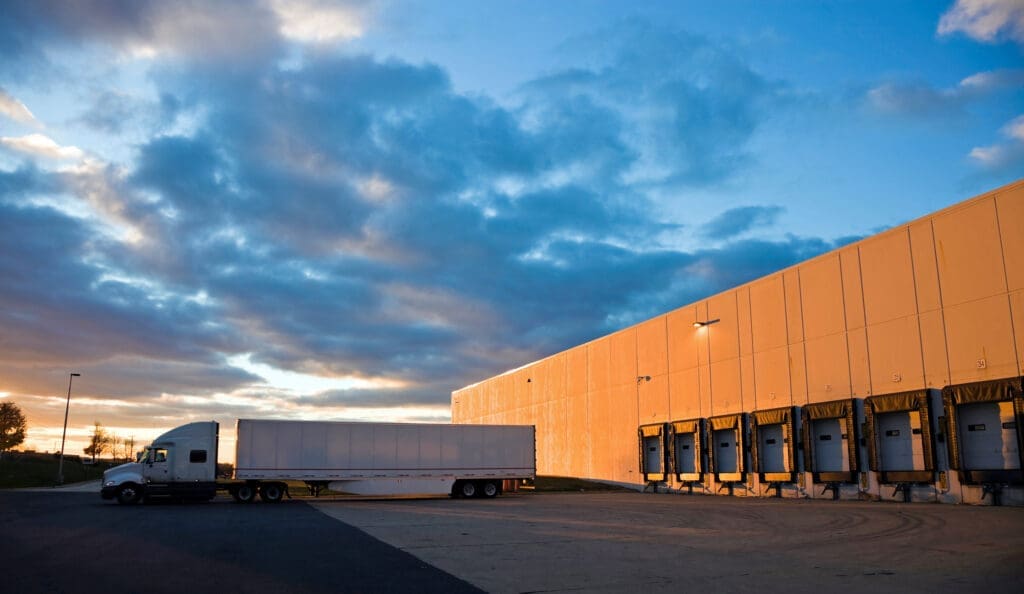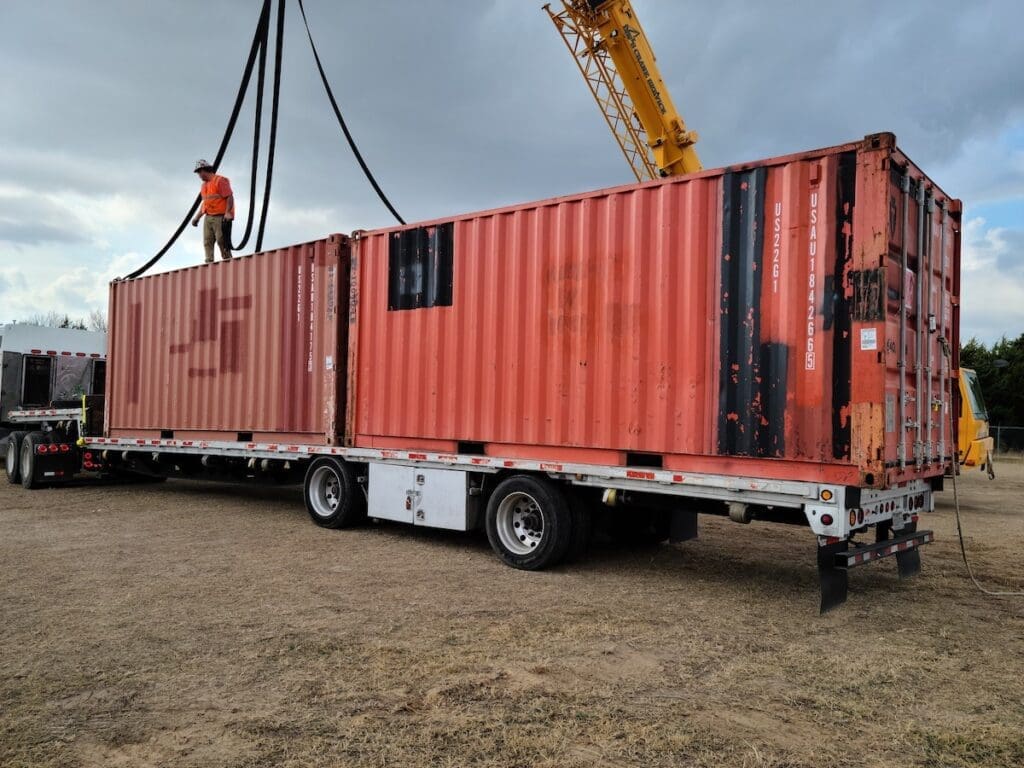Are you looking for a way to reduce shipping costs? If so, multi-stop shipping may be the answer. Also known as multi-stop trucking, this strategy involves transporting a full truckload of goods with deliveries at multiple stops along a single route rather than direct shipping from origin to a single destination.
The multi-stop truckload method is a hybrid of full-truckload (FTL) and less-than-truckload (LTL) strategies. The entire trailer is filled with your products, but not all of them are going to a single destination. Instead, the shipment is being delivered to multiple stops along a specified route.
Join us as we explore the ins and outs of this strategy so you can determine whether it is the right approach for your business. We’ll also provide some practical examples that illustrate the cost savings and efficiency gains that are possible through multi-stop shipping.
The Benefits of Multi-Stop Trucking for Businesses
It doesn’t matter whether you’re working with a third-party logistics provider, partnered with a broker, or handling everything in-house. Adopting a multi-stop trucking model can offer you significant benefits.
By consolidating shipments destined for multiple locations into a single truckload, your company can achieve big cost savings. This method reduces the need for multiple trucks, cutting down on fuel expenses and reducing your carbon footprint.
Additionally, multi-stop shipping streamlines the delivery process, enabling faster distribution of products to different destinations. The end result is better customer satisfaction, as you’ll enjoy improved delivery times and better product availability.
Consolidating multiple less-than-truckload orders onto one truck also decreases your risk profile. You’ll be less susceptible to liability claims because your freight isn’t sharing a trailer with freight from other businesses.
Significant Savings With Multi-Stop Truckload
The biggest appeal of multi-stop truckload shipping is the opportunity to reduce your logistics costs. Let’s explore two intriguing examples that illustrate what’s possible with this strategy:
Consolidated Deliveries for Retail Chains
Let’s say that you run a national retail chain and need to distribute merchandise from a centralized warehouse to multiple stores across a region. Traditionally, you would rely on either the FTL or LTL model.
Under the FTL model, you would have to send full trucks to each store. If you used the LTL approach, your cargo would be sharing space with freight from other brands. Neither option is ideal.
By adopting a multi-stop truckload shipping strategy, you can consolidate shipments destined for several stores in proximity to one another into a single truckload. For instance, one truck could haul freight for four stores. This approach would provide:
- Reduced Transportation Costs: Instead of dispatching four trucks for four stores, a single truck could make all the deliveries
- Decreased Shipping Frequencies: You could reduce the frequency of shipments
- Operational Efficiencies: This approach decreases the need for loading docks and personnel
As you can see, you’ll enjoy across-the-board cost savings and efficiency gains. The result is a leaner and more nimble supply chain.
Manufacturing Component Distribution
Multi-stop shipping is good for manufacturing distribution, too. Suppose that you produce components that are used by different assembly plants located in several states. Using the multi-stop method, you can send a single truck to deliver components to multiple assembly plants along a planned route, achieving benefits such as:
- Lower Shipping Rates: You could negotiate lower shipping rates due to the higher volume of goods moved in a single truck which uses less fuel.
- Enhanced Efficiency: This method reduces administrative burdens associated with managing multiple shipments on multiple trucks.
In both examples, the key to realizing these cost savings lies in the efficient planning and execution of the multi-stop truckload shipping strategy. By consolidating shipments, optimizing routes, and reducing the number of trips, your business can make huge financial gains.
Both scenarios are examples of single-pickup/multi-drop shipments. When you have a multi-pickup/single-drop arrangement, this is also considered a multi-stop shipping. An example would be when you have a client that has placed a large order that cannot be fulfilled from a single warehouse. A single truck can make pickups from multiple warehouses along a route and then deliver the entire truckload to a single destination. This is much more economical and efficient than sending separate shipments from each warehouse.
Operations of Multi-Stop Trucking: A Closer Look
The first stage of implementing a multi-stop trucking model is planning. You need to identify common stops along your supply chain so that you can group shipments into regions. Each stop needs to be sequential. A truck shouldn’t have to backtrack to facilitate multi-stop shipping.
On that note, it’s important to structure your loading processes to align with the intended delivery path. For instance, consider a scenario in which you are loading a truck with five shipments. The goods that will be delivered first should be loaded last and vice versa. This approach saves time during loading and minimizes the risk of damage to your freight, as it will only need to be handled once.
Finally, it’s time to execute your new strategy. Connect with your freight broker and let them know what you are trying to achieve. Hands-on partners like Next Exit will assist with everything from planning to coordinating with carriers. Our team makes it easy to streamline your supply chain so you can realize efficiency gains and cost savings.
Addressing Challenges of Multi-Stop Shipping
Rolling out a multi-stop shipping strategy can be challenging. One of the biggest hurdles you’ll face includes complex route planning. You need to plan routes that are logical and efficient while simultaneously ensuring that you are using as much space as possible on your trailers. Too much empty space on trailers will erode some of the cost savings of multi-stop shipping.
There is also an increased risk of delivery delays due to unforeseen circumstances at multiple stops. A seemingly minor delay at each delivery location can compound into huge issues by the time a driver reaches the end of their route.
The good news is that you can simplify the multi-stop shipping process by working with a freight broker or 3PL like Next Exit. At Next Exit, we help you realize your supply chain optimization goals through a personalized, hands-on, and customer-focused approach.
Frequently Asked Questions About Multi-Stop Shipping
What Is Multi-Stop Shipping?
Multi-stop shipping involves transporting a full truckload of goods with deliveries at multiple stops along a single route rather than direct shipping from the origin to a single destination. At first glance, it sounds a lot like LTL shipping.
While the two are similar, they are not one and the same. During LTL shipping, your freight is on a truck with cargo from several other shippers. The truck will make multiple stops, but only one of those drop-off points will be dedicated to your freight.
With the multi-stop trucking model, the entire trailer is filled with your cargo. However, each piece of freight is dropped off at one of your stores or designated delivery points.
What Is the Difference Between LTL and FTL Shipping?
LTL shipping combines shipments from multiple customers into one truck, whereas FTL shipping dedicates an entire truck to a single customer’s shipment. Multi-stop shipping is a hybrid of LTL and FTL; it means you have an entire truck to yourself, but the driver will be making more than one stop.
Is Multi-Stop Shipping the Right Logistics Solutions for Your Company?
If your goals include increasing efficiency and unlocking logistics cost savings, multi-stop shipping is an excellent option for your business. You’ll enjoy better routing and scheduling flexibility, which is a huge plus if your supply chain is complex and dynamic. The key to success in multi-stop shipping is choosing the right partner.
As a leading Dallas freight broker, Next Exit can help you implement a multi-stop trucking program that delivers a strong return on investment (ROI) and measurable savings. To learn more, contact our team, and let’s chat about your freight needs.




